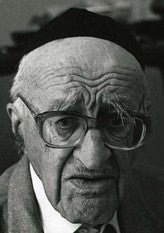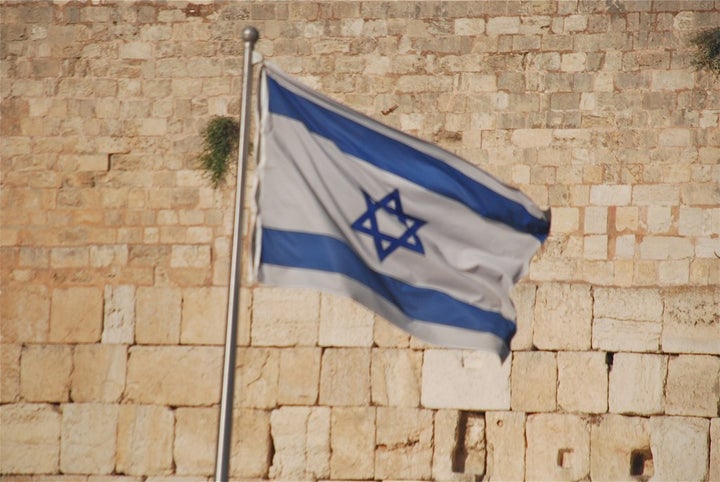The top story in Israel today has to do with the Western Wall. Contrary to earlier promises by Binyamin Netanyahu and despite years of negotiation, in an attempt to reach a compromise concerning the representation of different streams of Judaism at the Western Wall, the Ultra-Orthodox in Netanyahu’s government prevailed. The arrangement that had been agreed upon previously has been frozen, in what is clearly an attempt to exclude non-Orthodox from official standing at the Wall. This is an occasion to reflect on the meaning of Judaism’s most sacred site and most central religious geographic symbol.
I undertake this reflection as someone who for more than 45 years has not missed a Friday night service at the Wall, when in town and in good health. It is really the only synagogue I attend regularly. I am connected to it deeply on spiritual/mystical grounds and because it is a place that enables me to live a deep communion with the Jewish people, in all its variety. Actually, it allows me to connect not only to the Jewish people, but to all humanity. The Wall is the only place where members of other faiths come freely, pray regularly and exhibit a communion of prayer with Jews.
People occasionally comment on my strong attachment to the Wall, recalling the words of Prof. Isaiah Leibowitz, describing the Wall as idolatry. I have resisted this for 45 years. It is time to reconsider.

The Classical Significance of the Wall
The special status of the Wall draws from a unique combination of presence and absence. It recalls the absent Temple. But attachment to it is grounded in a rabbinic saying that affirms that the Divine Presence, the Shekhina, never left the Western Wall. This tension of absence and presence accounts for it being called the Wailing Wall, a sign of mourning for the exiled Divine Presence, but also for the many mystical and visionary experiences of the faithful. All, without exception, for nearly two thousand years, came to the Wall with the memory and aspiration of the Temple in their hearts. The Wall focused yearning for the Temple and provided a small taste of its Presence, through the prayers and experiences of tearful devotees.
What is this Shekhina that departed, yet remains present? Two principle understandings are relevant. The first relates to it as the Real Divine Presence, an aspect of Divinity. The other identifies the Shekhina with the soul of Israel and recognizes it as the mother of Israel, the collectivity of its spiritual being, the sum total of its yearnings, the part of Divinity deeply attached to the very being of Israel.
The Wall Following the Six-Day War
We have just commemorated 50 years since the Six Day War and the recent decision concerning the Wall is a moment to reflect on how the Wall changed as a consequence. Gone is the “Wailing” wall. “W” now stands for Western, as in the Hebrew. Gone are the tears. Gone are the prayer books devoted to the restoration of the Shekhina. Gone is the mourning and sense of tension between presence and absence, past and future.
The Wall has become a symbol of victory, triumph and national identity. While officially maintaining all the older meanings of the classical Wall, it has taken on a whole new layer of meaning, associated with the reunification of Jerusalem. It is a symbol of sovereignty, victory, and of national unity. Not only prayers take place here. Here soldiers are sworn in. Here major public events take place.
The Wall continues to recall the Temple, yet in some ways it has replaced the Temple, especially given political negotiations and the formula that Arabs possess the Temple Mount, while Jews possess the Wall. Joy, celebration and pride in nationhood have replaced the yearning for the exiled Shekhina and the quest for intimacy with God. Perhaps no one has perceived this more clearly than the Satmar hassidim who abstain from going to the Wall, ever since its liberation.
Certainly, many of the faithful who flock to the Wall do so for all the spiritual reasons that have brought Jews to the Wall for centuries. Yet, the Wall’s collective significance has been transformed, even as the flag of Israel flies proudly at the center of the broad plaza that has replaced the narrow alleyway that was once the Wall.
The Wall as Contemporary Idolatry
When Prof. Leibowitz spoke of the Wall as idolatry he referred to going to some place for prayer, as if God were more present there than elsewhere. This definition I have resisted for nearly half a century. But now a new definition of idolatry dawns upon me. Idolatry is worship of human power at the expense of God. It is taking pride in human institutions, while losing sight of God as the author of all. It is making human concerns more important than concerns divine. Sadly, the Wall has become an idolatrous reality in this sense. Turning the memory of the departed Divine Presence and the hope for rebuilding the Temple into a national symbol is the first step in the idolizing of the Wall. What we now see are the moral consequences of this move. Power, control, exclusion and disunity are the outcome of using a symbol of God for the aggrandizement of human institutions.

Prof. Yeshayahu Leibowitz
The process comes to full light when political interests and intricacies are grafted on to the national(istic) appeal to the Wall. Until recently, the Ultra-Orthodox were the one group that helped maintain the memory of the “old” Wall, its classical sense of yearning for the restoration of the Divine Presence along with attachment to it, without fully or consciously buying into its later national significance. Once political power was coupled with their ongoing fight against other streams of Judaism, the Ultra-Orthodox in fact succumbed to the nationalized significance of the Wall, attempting to paint it black and white. The official reasoning is religious and appeals to “the sanctity of the Western Wall.” Yet, this is a bogus category. It has no significant halachic precedent and never applied beyond the narrow confines of what is typically considered “The Wall.” What really drives the agenda is their recognition of the national significance of the Wall as an expression of unity and peoplehood and the desire to avoid any recognition of non-Orthodox streams, and even to .exclude the non-Orthodox from common peoplehood. It is a battle for power, a political battle, made possible only through political machinations.
When national symbolism overtakes spiritual quest ― this is idolatry.
When the quest for power and its application lead to division within the body of Israel, the self-same body of the Shekhina from which the Wall draws its sanctity, we witness the kind of idolatry that begets mahloket, internal division, a strike at the heart of Israel.
It is a sad moment, in which all parties play out the inevitable post-six-day-war script. When the non-Orthodox, whose attachment to the Wall was likely much weaker in the first instance, insisted on equal share in a national symbol, they drew out the implicit assumptions of what the “New” Wall means. And when the Ultra-Orthodox turned the table on its head to exclude the Reform, they shifted from protectors of the true spiritual meaning of the Wall to power mongers who contribute to its idolization.

MK’s Yaakov Litzman and Aryeh Deri
An Invitation
I will not stop going to the Wall. The Shekhina probably feels more abandoned now than it has in the past 50 years. She is crying for new reasons and her tears must reorient our quest. There is thus a new intention in going to the Wall, as we rediscover suffering and heartache, striking at the heart of the Jewish People and the Divine Presence. The pain generated by this moment is an invitation to rediscover the balance of presence and absence for today, and to enter more deeply into the mystery of the Shekhina and the affirmation of the unity of Klal Yisrael.
